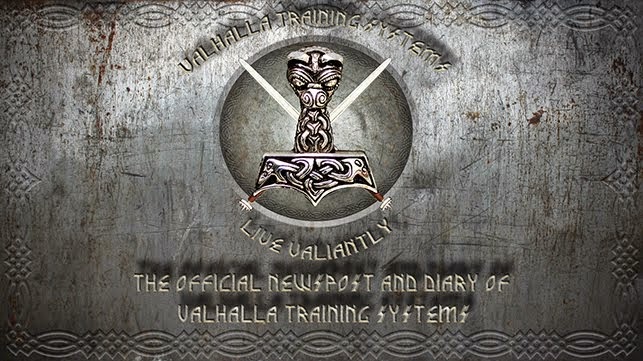Sunday's class was an interesting diagnostic for me to see the issues that most need working on in class. For most people - in fact, I would say for all - the key issues are:
1.) Fear reactivity - tensing up and flying into berserker mode in response to or anticipation of contact. For now, forego the combative mindset until I specifically call for it in class and work to move smoothly and efficiently. Treat training as an exercise in learning how to move freely under any situation, rather than how to utterly destroy your mortal enemies. Working on the former will open up horizons to you, while dwelling overmuch on the latter is counterproductive. I will be covering mechanical efficiency as a performance indicator in combat and how to shave away at the little extraneous movements we all make without being aware of them throughout the day in a future session.
2.) Lack of Mobility: This is one of those things that has to be addressed through consistent and repeated training. Mobility is a foundation for a lot more than just wiggling like Gumby - it impacts everything from your ability to generate power to your ability to survive bad situations with as little harm as possible to yourself.
With the above in mind, continue the homework assignment given in lesson #1 and work also on the 1-legged soft fall and backward roll covered in this lesson. Both are essential skills by themselves and also excellent exercises to free up your range of motion. For those of you who cannot yet achieve a heels-to-ground, bum-to-heels squat yet, continue especially to work on that wall squat. I will be showing more variations next session.
Till next time,
Train well.
Theme
2.) Introduction to leg work
3.) Consolidation from lesson #1
Basic Joint Mobility
Neck: Forwards/backwards glides, side-to-side glides, side-to-side tilts, rotation
Shoulders: Basic rolls, forwards and back, figure-8s of the arm
Elbows: Drill bit
Wrists: Up and down, side to side flexing
Hands: Finger roll to fist and OK-sign
Thoracic Spine: Forwards and back arch, side-to-side glide
Lumbar Spine: Pelvic thrust, side-to-side hip lift
Hips: Forward thrust and sit-back to squat, side to side squat,
Knees: Basic circles
Ankles: Basic circles
Basic Neural and Structural Prep Drills
- Basic rolling and falling: back rolls, soft pistol back fall
- Partner push drill; progression: 360-degree walk-round and push; include legs – touch on nature of basic leg usage in Systema, pushes only today
- Marionette/sweater snag drill (NEW)
Manipulating Structure On The Fly
- Zombie-walk to arm-drape and shadow – brief warmup
- Zombie-walk to arm-drape, shadow and biomechanical takedown – do a few rounds; nix arm-drape and shadow for later rounds and move straight to takedown
Pushing and Striking to Attack Structure
-
- Partner striking drill
o warmup w/ dependent striking
o Progression 1: striking to disrupt equilibrium and cause uke to lose ground; uke aims to stand ground
o Progression 2: structural counterstriking – tori aims to counter uke’s strikes by striking to disrupt transfer of power
Fist push drill across room – 1st round uke applies passive resistance; subsequent rounds uke active resistance; emphasise pushing towards points of weakest stance integrity (triangle point)
Sequential Reciprocal Step Sparring – Progression on Marionette/Sweater Snag Drill
Partners take turns being tori and uke and perform a set number of discrete, single attacks (any, according to preference) on each other, with uke freezing in whatever structure the conclusion of each attack leaves him/her in. At the end of each sequence, roles switch and new tori must attack from whatever structure previous tori left him/her in.




